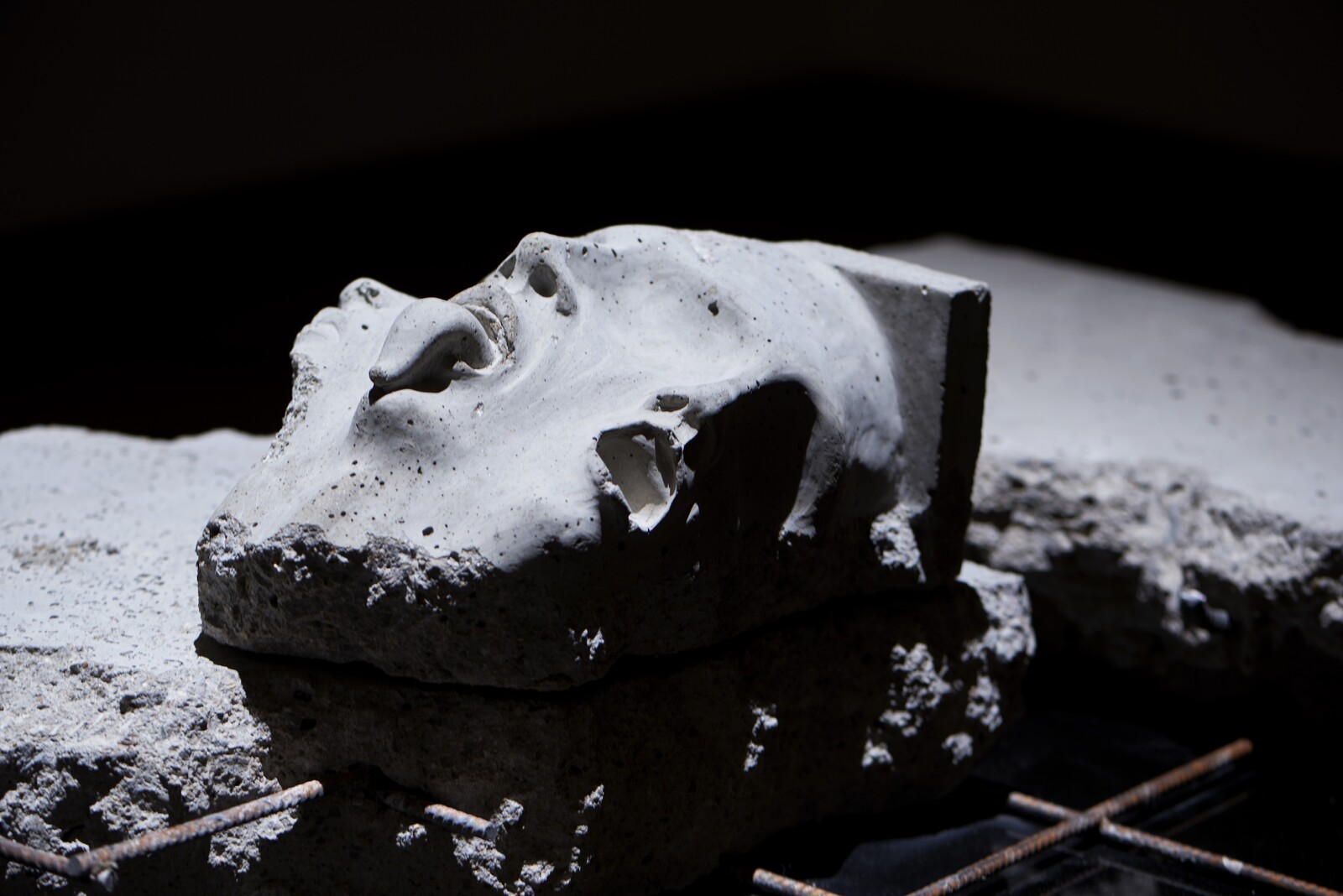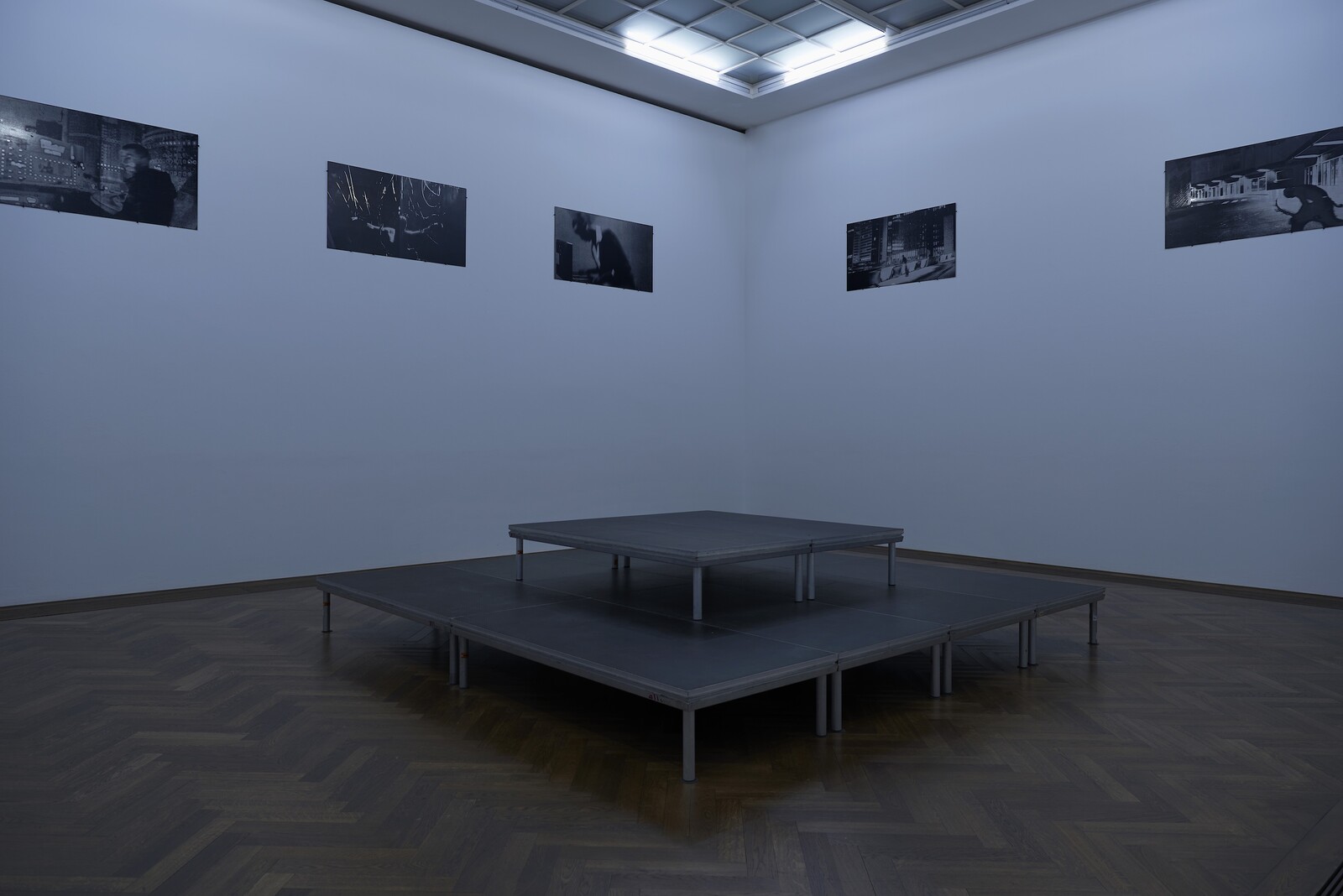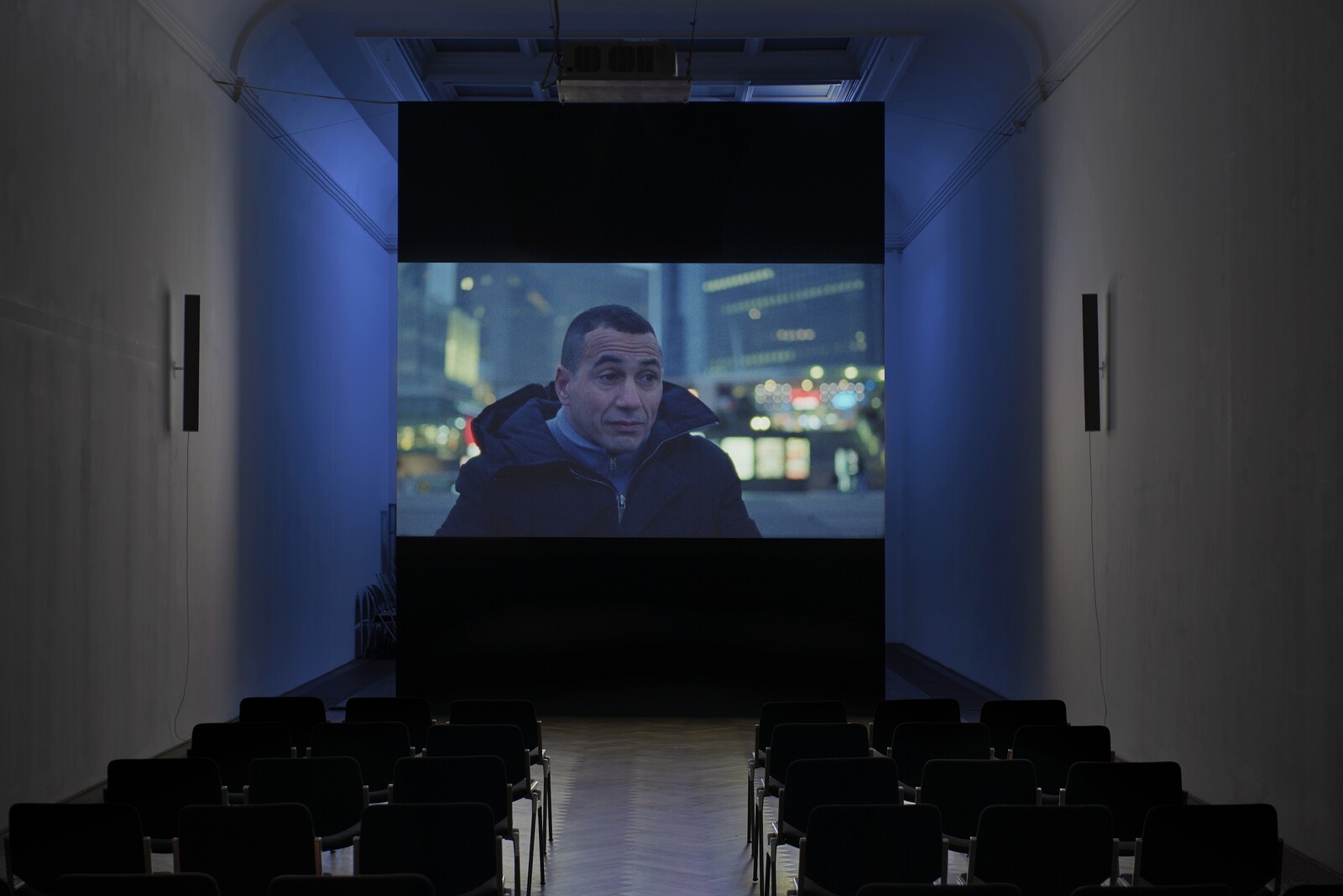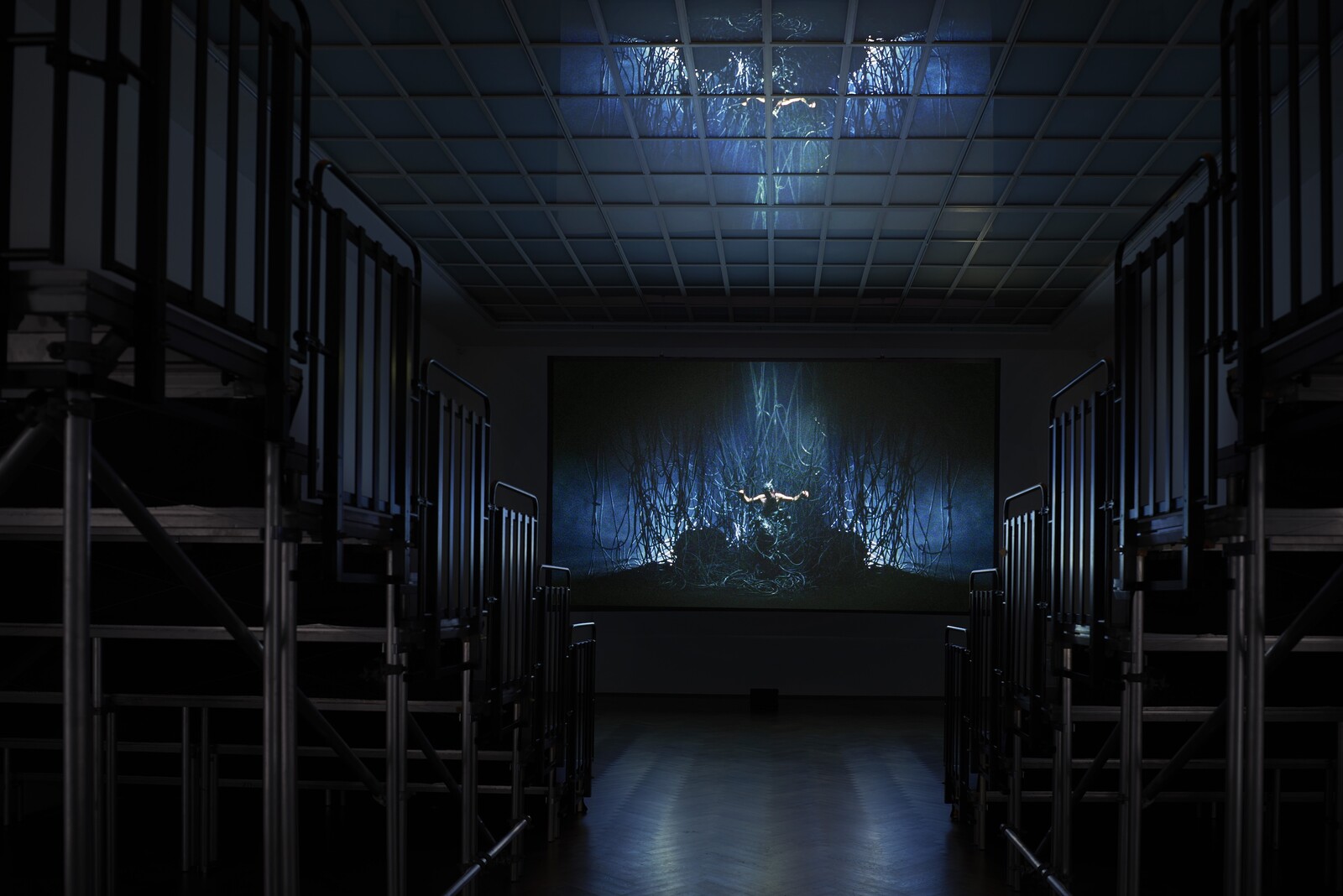Valentin Noujaïm’s “La Défense” trilogy (2022–25) opens with archival news footage about the construction of the Arche de la Défense in Paris, completed in 1989 to mark the bicentennial of the French Revolution. This introduction establishes the central subject of the films—the corrupted and corruptible spatial environment of Europe’s largest purpose-built business quarter—while betraying little of the extravagant range of stylistic and generic registers that Noujaïm goes on to employ in the trilogy. Over the course of these films, the artist’s emphases deviate from this district’s lived history, in favor of more speculative narratives which unfurl using tropes of body horror and arthouse sci-fi. The gray skyscraper-fantasia of La Défense emerges as a synecdoche for the vampiric properties of corporate capitalism everywhere, even while the films remain local to the racialized neoliberal logics of the French capital: the arch was one of Socialist president François Mitterrand’s “Grands Projets,” and the business quarter’s construction from the late fifties onwards precipitated the displacement of predominantly Arab communities.
After much acclaim for the first two films on the festival circuit, this exhibition at Kunsthalle Basel (which co-commissioned the third) offers the first opportunity to survey Noujaïm’s trilogy as a body of work, shown alongside installations and sculptures. Pacific Club (2022) is screened in what a curatorial text describes as evoking “an abandoned conference space” consisting of rows of black plastic chairs. It commences an inquiry into what lies beneath the architectures of metropolitan power, sustained throughout the trilogy, with a focus on the memory of the titular underground nightclub that catered to an immigrant clientele. The oral recollections of Azedine Benabdelmoumene, a teenager during its mid-eighties heyday, reconstruct the club’s precarious existence and vanished afterlife. His narration is complemented by footage of a dancer roaming the deserted streets at night, a mournful saxophone overture, and computer-animated interludes summoning the club’s social world. What could play as a straightforwardly sentimental documentary tribute is given a digressive form with a conceptual twist: at night, when the district becomes a ghost town, it’s haunted by embodied memories of its vanished histories.
The entirely scripted To Exist Under Permanent Suspicion (2023), with its bassy soundtrack, turns up the volume on its predecessor’s thick sense of foreboding. Kayije Kagame plays an office worker driven to delirium by the degradations of corporate life—and, perhaps, vengeful forces rising up from the land beneath her workplace. Among Noujaïm’s preoccupations is how visions of “progress” predicated upon endless growth, emblematized by places like La Défense, are entwined with surveillance technologies: characters are constantly aware of being looked at and assessed. Building on Pacific Club’s exploration of the site’s prehistory, the district here emerges as a place where complex dynamics between watching and being watched, surveillant and surveilled, are negotiated, while monstrous forces manifest in surprising and violent ways. An installation of gargoyles placed atop a steel structure (Gargoyle 1 and 2, both 2024), positioned as a sculptural interlude between the first two screening rooms, lends pathos to the theme: gargoyles were believed to ward off evil spirits. Their fallen, broken stature here suggests both the loaded nature of “security” in our own surveillance culture and a disgraced emblem of the iconic architecture of Paris.
Demons to Diamonds (2025), the series’ anxious climax, pivots to apocalyptic kitsch. In a heightened near future, a string of mysterious suicides at the Grande Arche has punctured La Défense’s facade of authoritarian “security.” A succession of elaborately theatrical vignettes inflected by the genre conventions of neo-noir and sci-fi horror and incorporating 16mm, CGI and CCTV footage, narrate the conspiratorial aftermath of these deaths. The clearsighted approach of the earlier films is sacrificed for stilted narrative set pieces and a tendency to symbolic overelaboration (among its recurring motifs are a ticking clock). The film’s excesses are embodied by actor Denis Lavant, who plays a seer dwelling beneath the city streets, driven to monstrosity by the excesses of the age. Though his performance is electric, he is utilized mainly to articulate the trilogy’s well-established themes, in a series of monologues which verge on trite speechifying. “France is nothing but fear,” he says; “as surveillance becomes the new norm, hatred is omnipresent.”
A tension thus emerges between the use of La Défense as a site for excavating alternative narratives and as a vehicle for more predictable cinematic effects, a feeling exacerbated by an exhibition design that aims, not entirely productively, to mimic the settings of the films, leading to a sense that they are spectacularizing their subject. The exhibition is structured so that the visitor has to reverse course and revisit each work as they exit, meaning they end back at the trilogy’s starting point. The modest documentary beginnings of “La Défense” feel jarringly distant from the glib ostentation of its finale. Noujaïm’s work is at its most effective in moments of contemplation, when the specters he summons speak for themselves.





